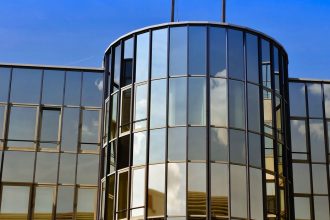As the world grapples with the repercussions of climate change and depleting natural resources, the construction industry stands at the forefront of a crucial transformation. In recent years, eco-friendly construction practices and sustainable real estate development have gained momentum, driven by advancements in technology, rising environmental awareness, and regulatory shifts. This post explores key green building trends, innovative practices, and initiatives such as the Living Building Challenge that underscore the commitment to a more sustainable future.
1. Introduction to Green Building
What is Green Building?
Green building incorporates practices that minimize the negative impact on the environment while promoting the health and well-being of occupants. This includes the efficient use of energy, water, and materials during construction, operation, and demolition. Sustainable real estate development extends this philosophy, focusing on the overall impact of buildings on their environment and communities.
Importance of Green Building
-
Environmental Impact: Traditional construction and building practices contribute significantly to greenhouse gas emissions, waste generation, and resource depletion. An eco-friendly approach addresses these issues by promoting energy efficiency, sustainable materials, and waste reduction.
-
Economic Benefits: Sustainable buildings often yield lower operating costs due to energy efficiency, resulting in long-term savings for owners and tenants.
- Health and Well-Being: Green buildings often improve indoor air quality and promote occupant health through natural light, efficient ventilation, and the use of non-toxic materials.
2. Innovations in Green Building Design
Energy Efficiency and Renewable Energy
Green buildings often incorporate energy-efficient strategies, leveraging new technologies like:
-
Solar Panels: Photovoltaic systems harness sunlight, providing renewable energy for buildings, minimizing reliance on fossil fuels, and significantly reducing carbon footprints.
- Energy-efficient HVAC Systems: Modern heating, ventilation, and air-conditioning systems use advanced technologies, such as variable refrigerant flow and geothermal systems, to optimize energy use while maintaining occupant comfort.
Sustainable Materials
The selection of sustainable building materials is crucial for reducing environmental impact. Innovations include:
-
Recycled and Repurposed Materials: Many architects now utilize reclaimed wood, recycled metal, and other repurposed materials, which not only reduce waste but also offer unique aesthetic qualities.
- Biodegradable and Low-impact Materials: Advances in material science have led to the creation of materials like bamboo, hempcrete, and rammed earth that maintain structural integrity while being eco-friendly.
Water Conservation Technologies
Water conservation is another critical aspect of sustainable building. Innovations in this area include:
-
Rainwater Harvesting Systems: Capturing and using rainwater reduces reliance on municipal water supplies and lowers water costs.
- Greywater Recycling Systems: These systems treat and reuse water from sinks, showers, and washing machines for irrigation or toilet flushing, further reducing fresh water consumption.
3. Certification and Standards
The Living Building Challenge
One of the most ambitious frameworks guiding the green building movement is the Living Building Challenge (LBC), established by the International Living Future Institute. The LBC goes beyond typical green building certifications like LEED (Leadership in Energy and Environmental Design) by setting stringent goals for:
-
Net-Zero Energy: Buildings must produce as much energy as they consume over the course of a year.
-
Net-Zero Water: Buildings must balance their water consumption with collected rainwater and greywater usage.
-
Material Sustainability: LBC promotes the use of safe, non-toxic materials, banning substances known to have harmful environmental and health effects.
- Equity and Beauty: The LBC emphasizes the importance of creating spaces that enhance the quality of life for occupants and promote community engagement.
The Filbert Street Garden in San Francisco and the Bullitt Center in Seattle are two exemplary projects that have achieved Living Building certification, demonstrating the potential for buildings to operate sustainably while creating positive impacts on their surroundings.
4. Green Building Trends in Real Estate Development
Eco-Districts and Green Communities
The concept of eco-districts has emerged as a strategy for sustainable urban development. These neighborhoods prioritize environmental stewardship, social equity, and economic viability. An example is the Portland Sustainability Institute’s EcoDistricts Initiative, which focuses on developing areas that encourage sustainable living through shared resources, green infrastructure, and community engagement.
Smart Building Technologies
The integration of smart technologies in building management is revolutionizing green building practices. Smart systems can optimize energy use through real-time monitoring, enhance user experience with personalized environments, and maintain efficiency in resource management.
5. Conclusion
As the construction industry faces increasing scrutiny over its environmental impact, the trends toward eco-friendly construction practices and sustainable real estate development are set to dominate the future landscape. By leveraging innovative technologies, adhering to ambitious certification standards like the Living Building Challenge, and fostering community engagement, the sector can evolve towards a more responsible and resilient approach to building.
Transitioning to greener practices not only addresses the urgent issues posed by climate change but also enhances the quality of life for occupants, making sustainable real estate development a wise investment for the future.
References
-
International Living Future Institute. (2023). Living Building Challenge. https://living-future.org/lbc/
-
The Green Building Council. (2023). LEED Certification. https://www.usgbc.org/leed
-
Portland Sustainability Institute. (2023). EcoDistricts Initiative. https://ecodistricts.org/
- U.S. Department of Energy. (2023). Energy Efficiency & Renewable Energy. https://www.energy.gov/eere/
By considering these innovative green building practices, both the construction industry and society at large can move towards a future that respects the planet and enhances the lives of its inhabitants.






